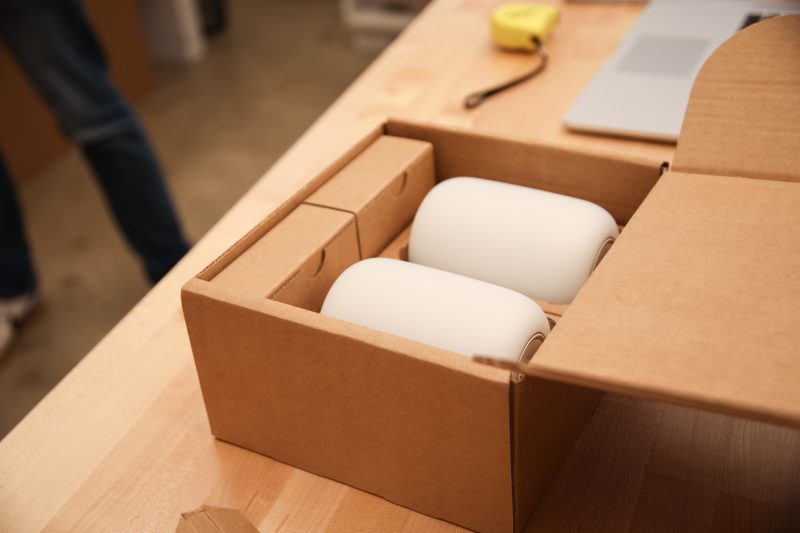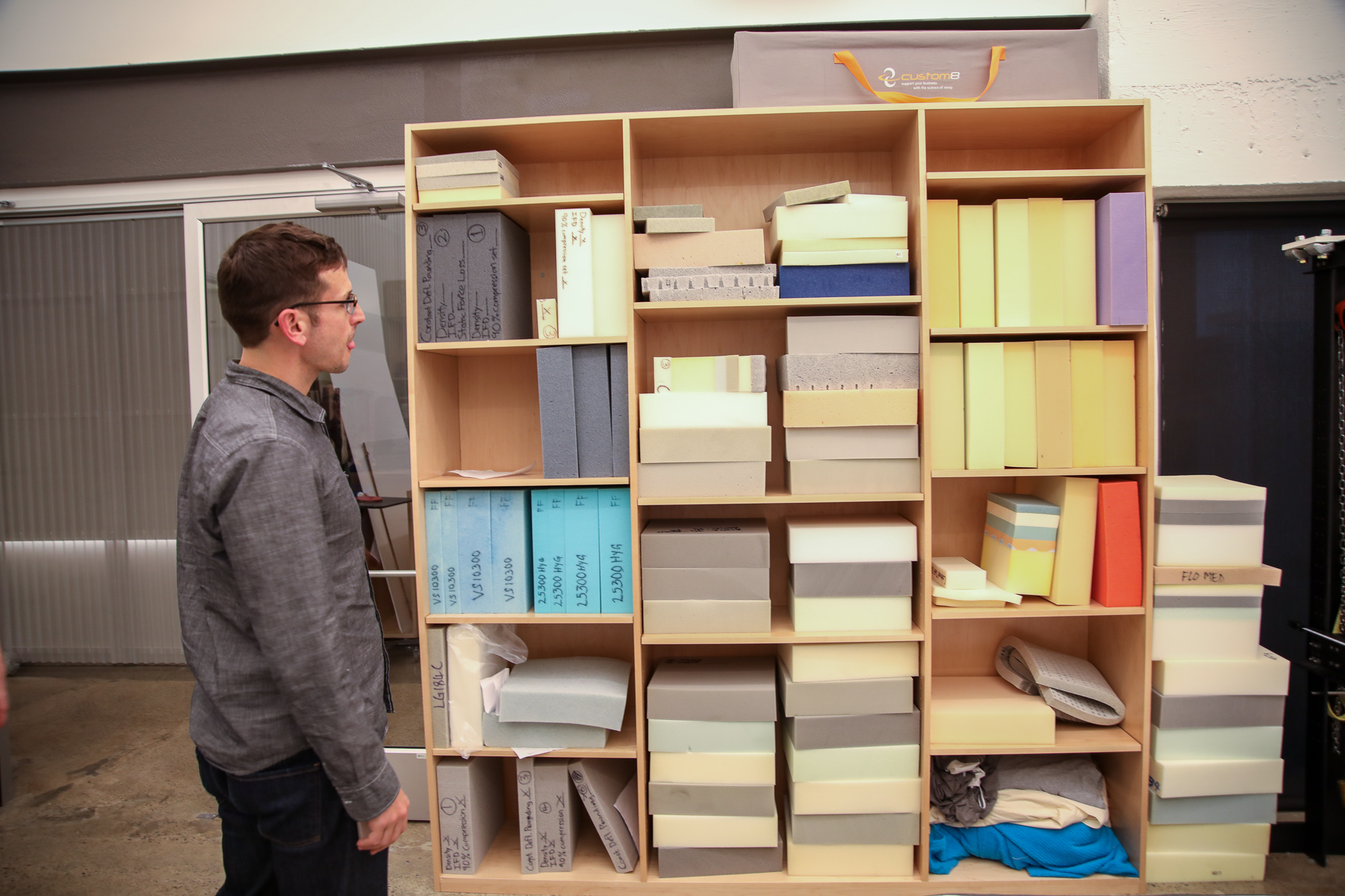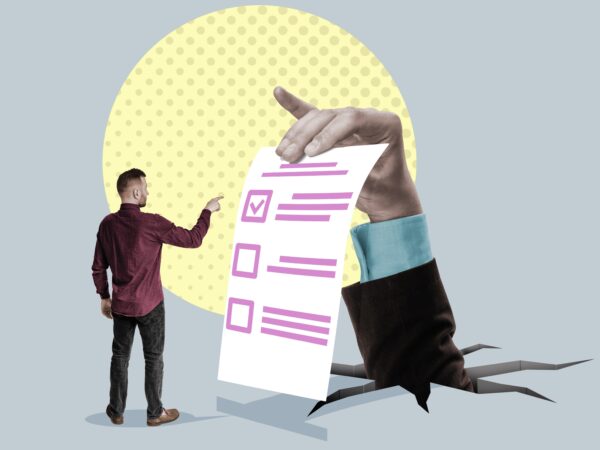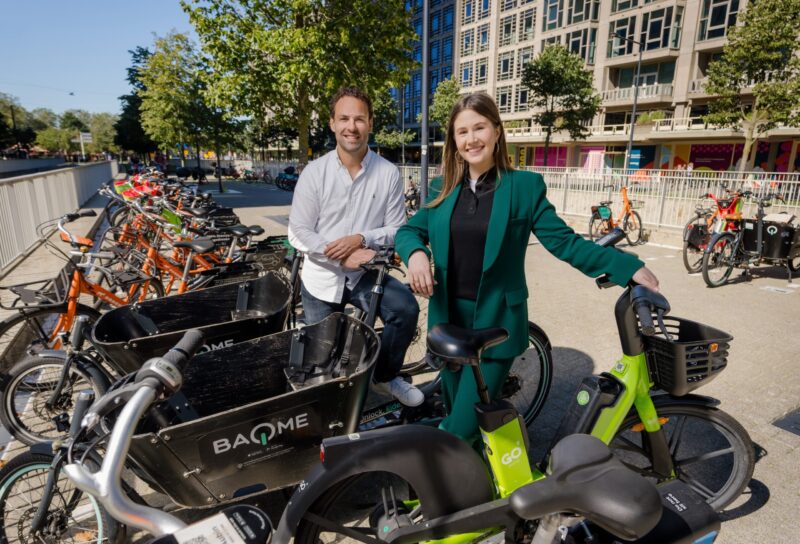- The online mattress company Casper has expanded its sleep-centric product line to include everything from bedside lights to duvets to multiple types of mattresses.
- More products, however, mean a lot more product testing is needed – especially for a company that’s as much a high-tech startup as it is a mattress company.
- Recently, Business Insider was invited for a tour of Casper’s San Francisco testing lab. Read on for a look inside the lab.
- Visit BusinessInsider.com for more stories.
The online mattress company Casper made waves when it launched in 2014 – mostly for the completely new buying experience it offered.
Instead of having to visit a mattress store in-person and negotiate with aggressive salespeople, those in the market for a new bed could simply order one on Casper’s website and have it shipped (in a compact cardboard box) right to their front doorsteps.
However, as Casper’s co-founder and Chief Product Officer Jeff Chapin told Business Insider in a recent interview, the mattress world caught on quickly to the experience the startup was offering, and many copied its playbook.
“Now there’s like 50 companies that sell one mattress online,” Chapin said. “The landscape changed. We have to adapt to that and find a new value proposition. We think it’s about getting people better sleep.”
A focus on better sleep has broadened the possibilities for Casper, beyond selling the one, standard mattress it offered when it first launched. Today, Casper's sleep-centric product line runs the gamut from bedside lights to duvets to multiple mattresses for an array of preferences.
"It's all about - how do you meet the needs of more people?" Chapin said. "We do think there's this big unmet need around sleep, it's just finding what's our unique take on everything."
Casper's ability to expand its product offering beyond mattresses will become increasingly important as the company prepares to go public, which it announced in March it had begun preparing for. To date, Casper has raised over $330 million and was most recently valued at $1.1 billion.
More products also mean a lot more product testing - especially for a company that's as much a high-tech startup as it is a mattress company. Chapin told us that for every product that eventually makes it to market, many don't, but that the tinkering and experimenting in its lab is "all about figuring out what is a sleep company and what isn't."
Here's a look inside Casper's San Francisco testing labs:
The Casper lab is located in San Francisco's Mission District.
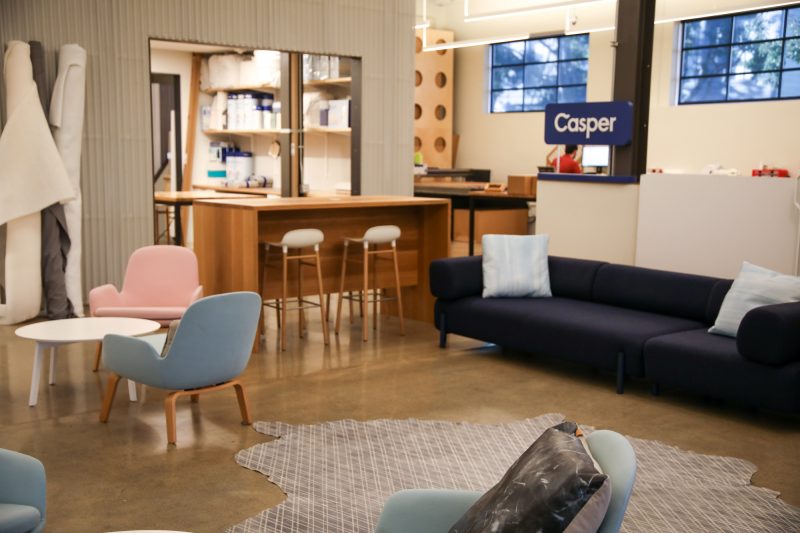
At the labs, there are firmware engineers, electrical engineers, design researchers, and more who are thinking up Casper's next generation of products.
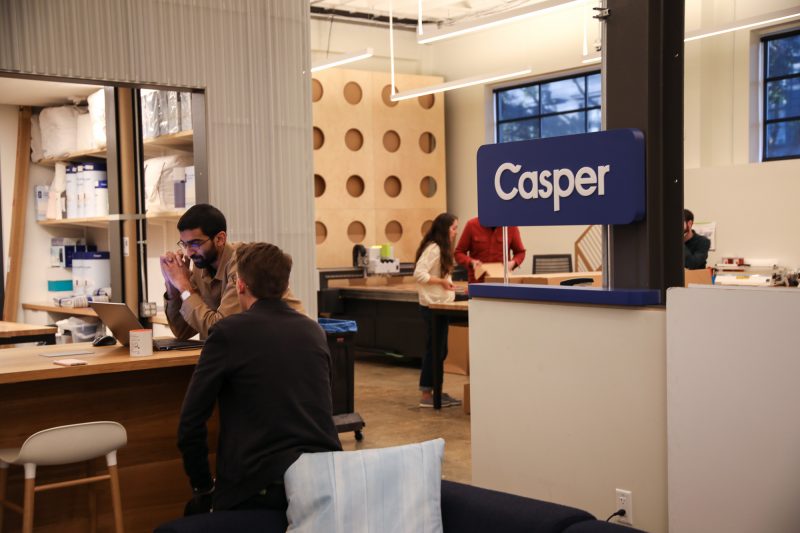
Casper outsources some of its ergonomics testing, but most of its prototyping and testing takes place in-house, right in the heart of San Francisco.
The company's business headquarters is in New York City.
Casper's co-founder and Chief Product Officer, Jeff Chapin, was our guide.
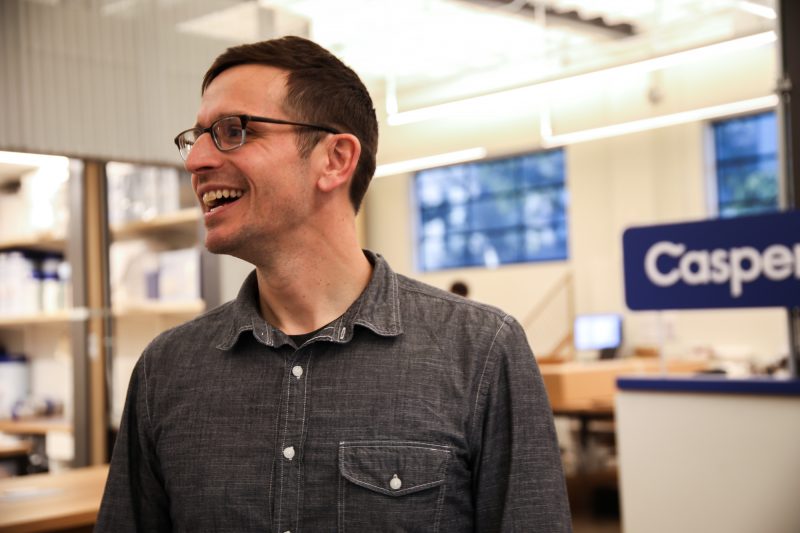
Chapin explained that Casper is in the sleep business, not just the mattress business, which means the company thinks about products people use when preparing to go to bed and when they wake up.
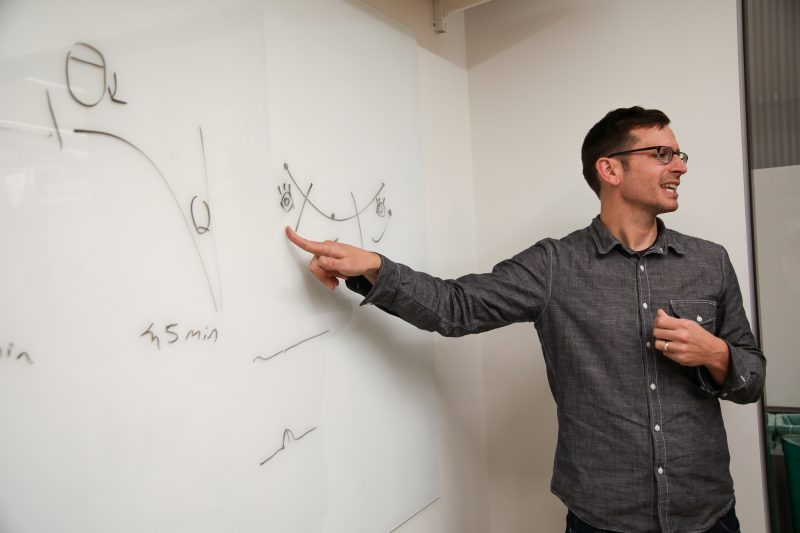
That's why in January the company launched the Glow Light — a "smart" bedside light that slowly dims as you're getting ready for bed and slowly brightens when you want to wake up.
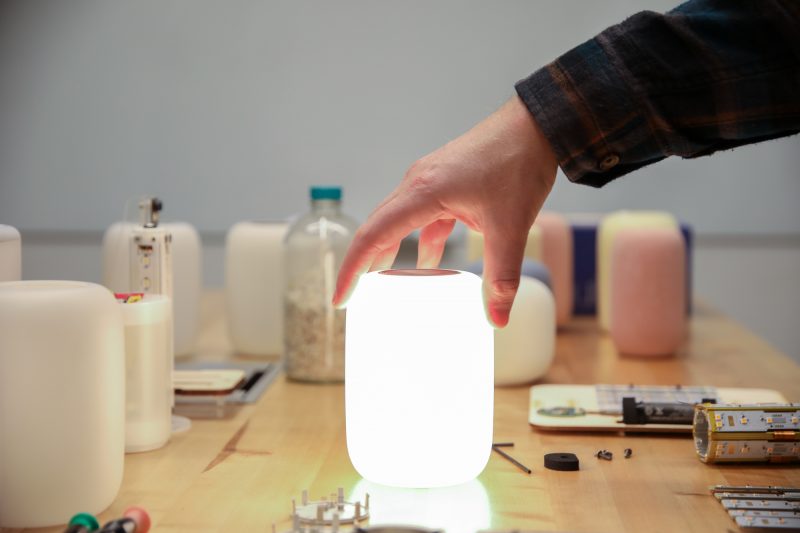
Chapin said that the Glow took them two years to develop and that initial sales for the product far exceeded expectations. In less than one month, Casper sold out of its initial run of Glow Lights.
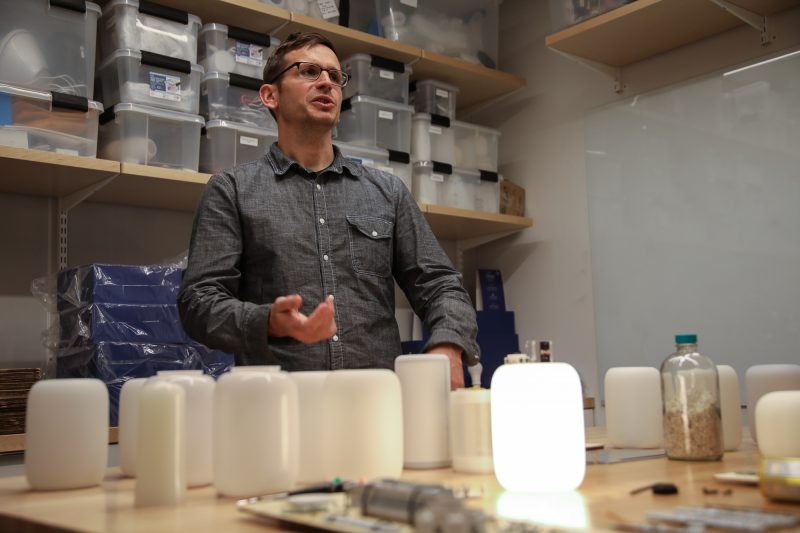
The Glow doesn't have any buttons and instead uses a series of gestures — twisting the orb to dim the light or flipping it over to turn the light off, for example. So how the product felt in a person's hand was a key consideration.
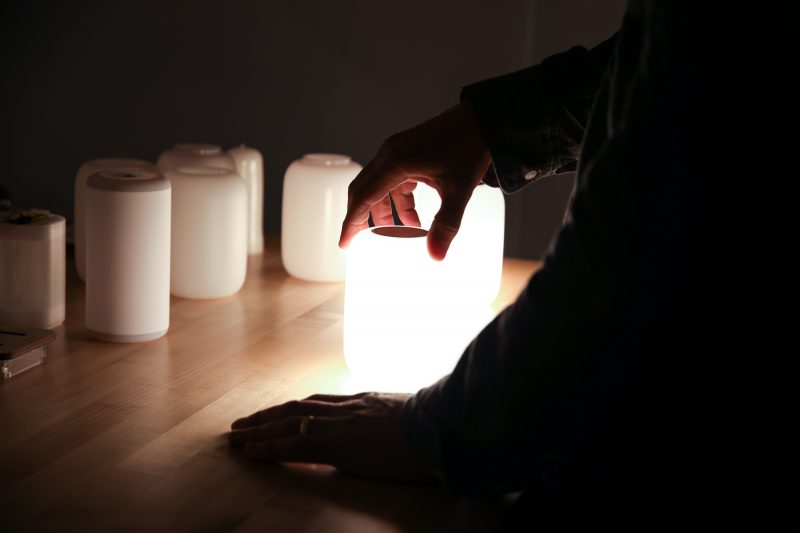
Early prototypes had many different shapes, but ultimately they settled on the one that felt most natural to grip.
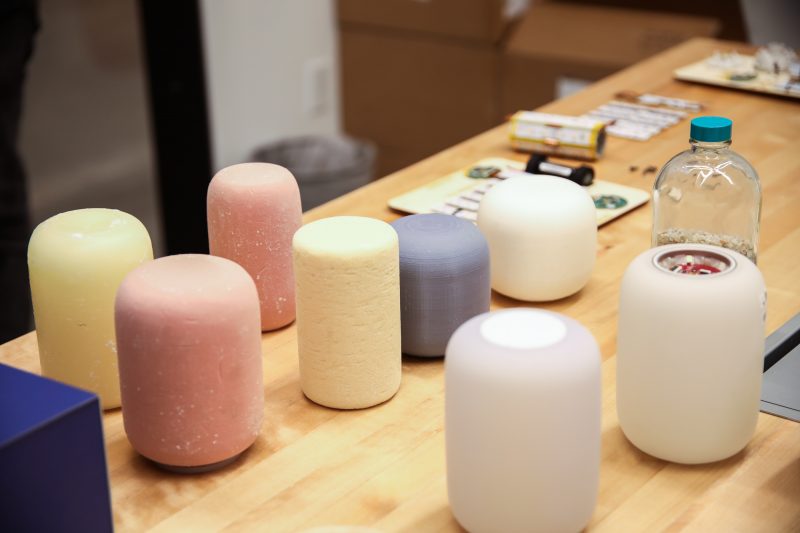
Being in the business of sleep has also led Casper into making its own bedding — sheets, duvets, mattress protectors, and even, quilts. But like all products, these textiles must be heavily tested.
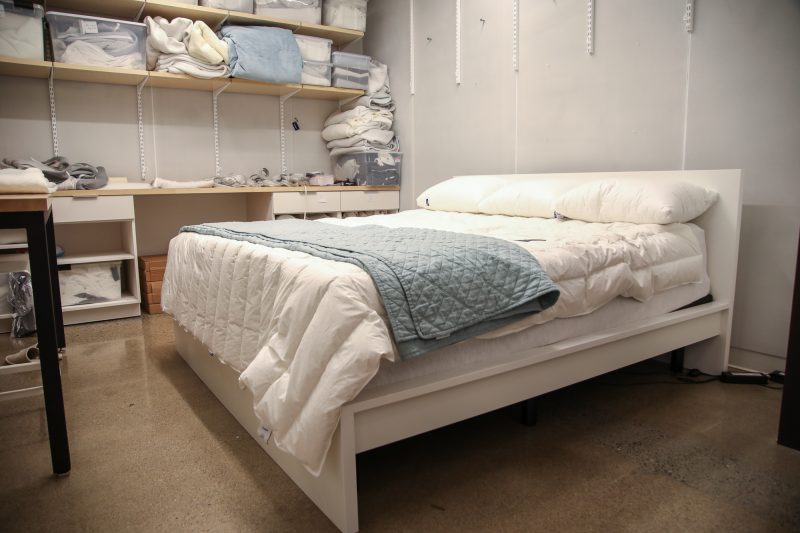
Luckily there's a Casper engineer for that.
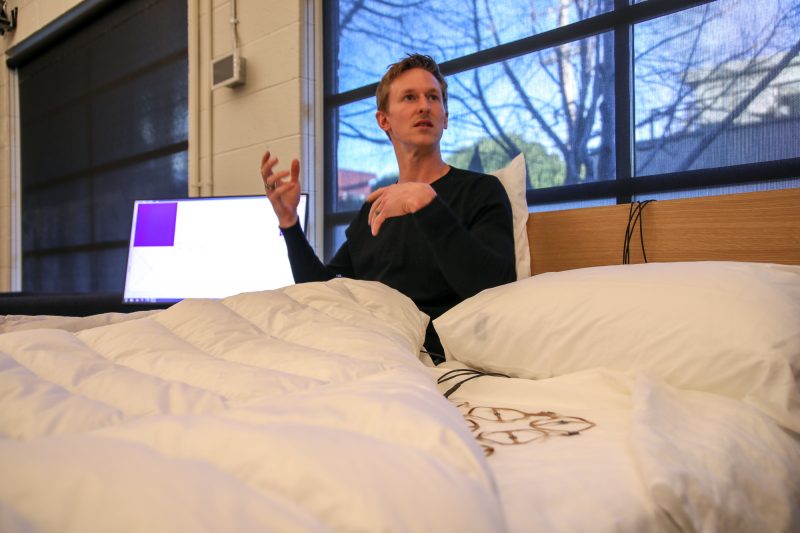
Eric Konzelmann, a mechanical engineer, told us that he analyzes hours of sleep data to measure temperature and humidity under the covers, hoping to reach optimal breathability levels.
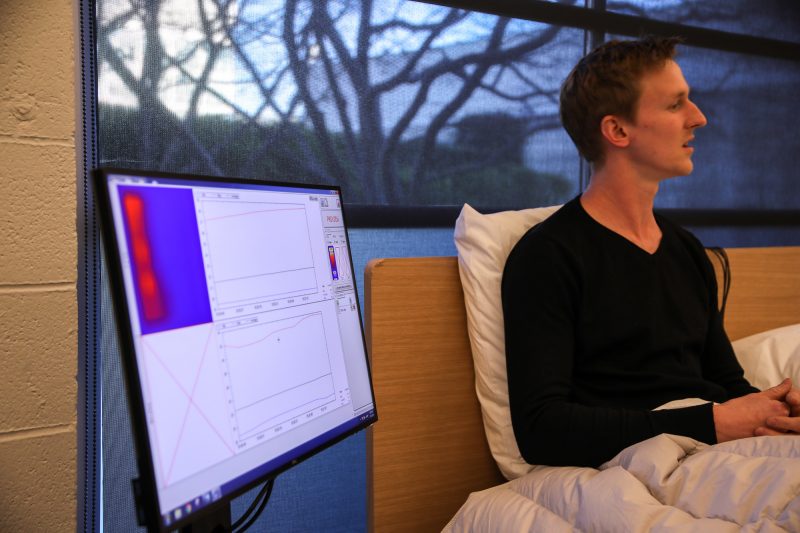
Casper gathers data from human subjects hopping into its bed at the lab in San Francisco, but also by sending test kits home with employees, their friends and family, and a group of Casper testers.
The company can measure things like what the temperature is like under the sheets and whether a subject is too hot or too cold while they're sleeping.
As for the beds themselves, Casper uses foam (not springs), which gives them plenty of options to choose from.
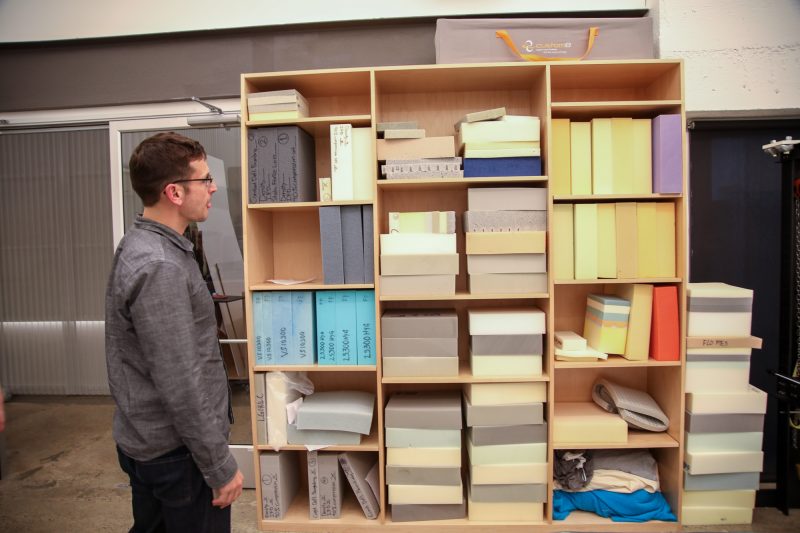
Chapin explains that a Casper mattress will have squishier foam on the outer layers and firmer foam towards the center.
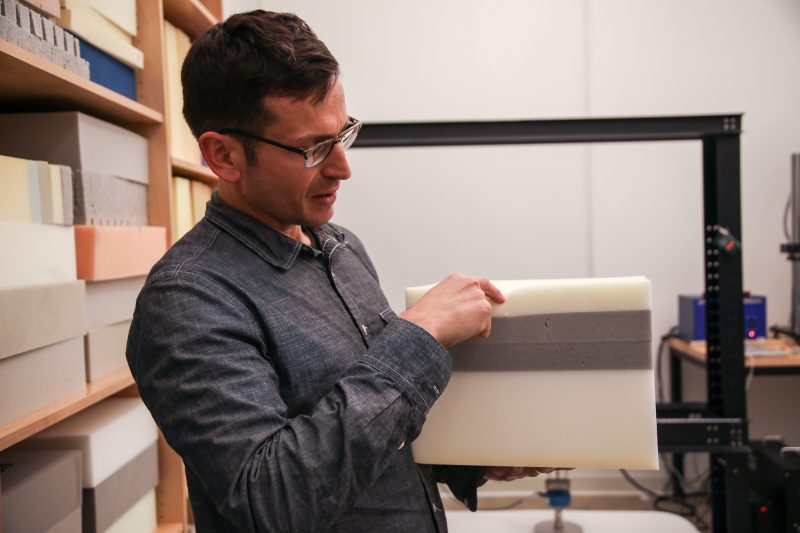
Prototype mattresses are pressure tested to measure their durability. This machine pushes down 100,000 times on the bed (which takes about a day) to see how the foam holds up.
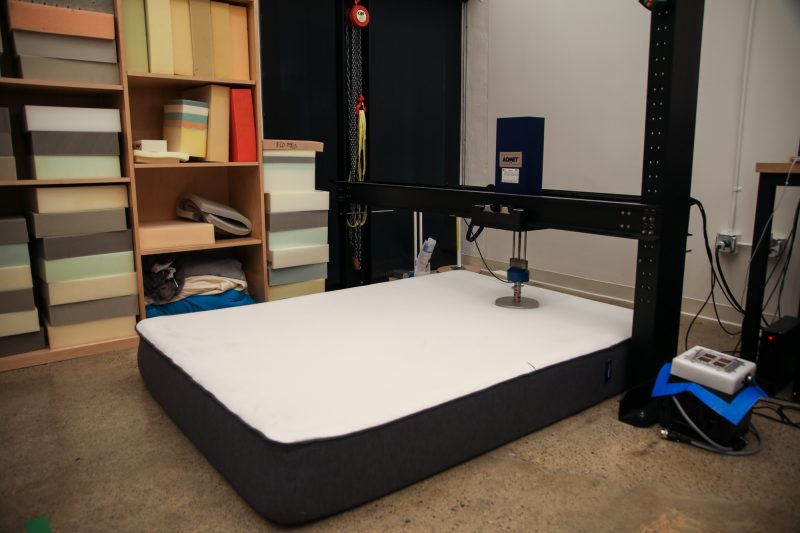
Casper even invented a sweating thermal sacrum machine, AKA a lower-back-sweat simulator.
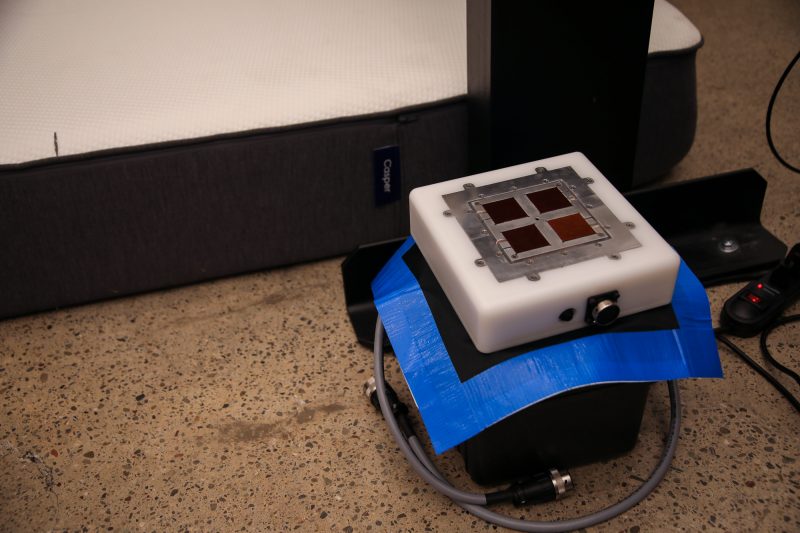
The lower back is typically the hottest, sweatiest part of your body when you sleep, according to Chapin, so the machine has hot plates that leak a small amount of moisture over time. That way, Casper can see if its mattresses hold up for hot sleepers.
Mattresses are also tested for comfort and ergonomics.
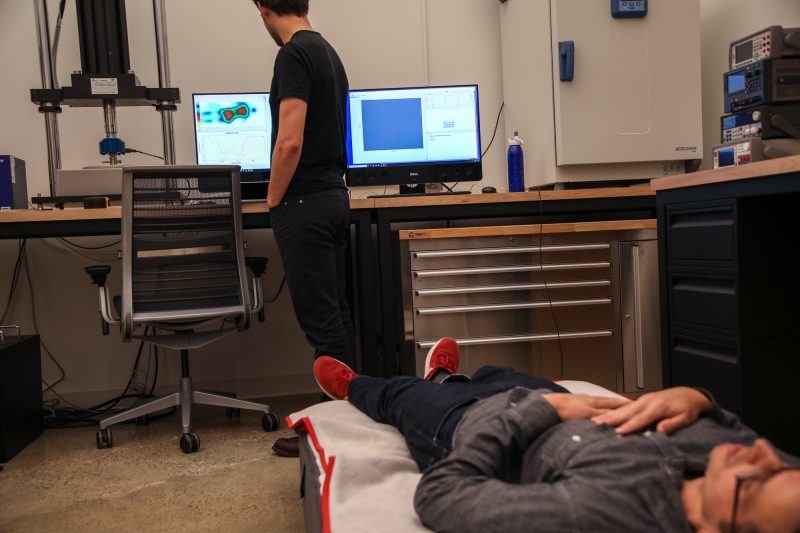
Chapin said the company learned the heaviest part of a person's body is between "their thighs and their gut," so in newer generations of Casper mattresses, the center section of the mattresses is the firmest.
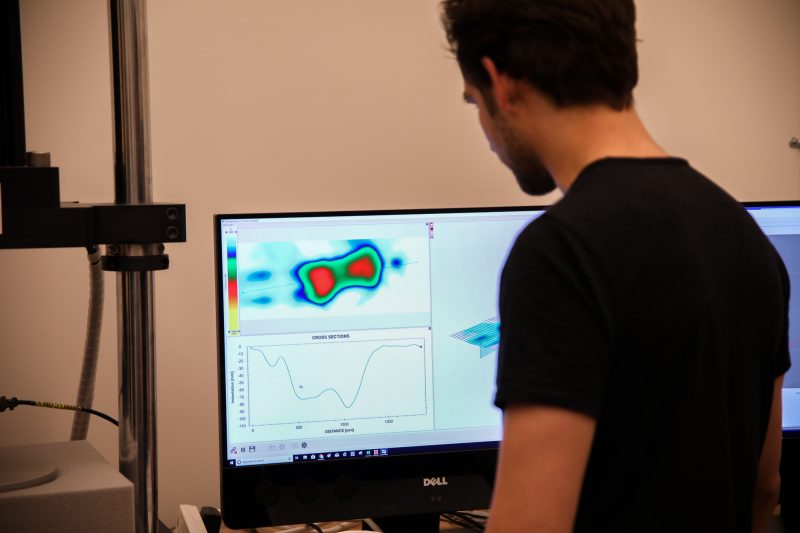
Finally, a major part of Casper's success is shipping mattresses directly to customers, which means packaging is essential for the company. Chapin says they used to have three to four-day turnaround times on box prototypes, but that was too slow. An in-house machine lets them easily test out new box ideas in a matter of minutes.
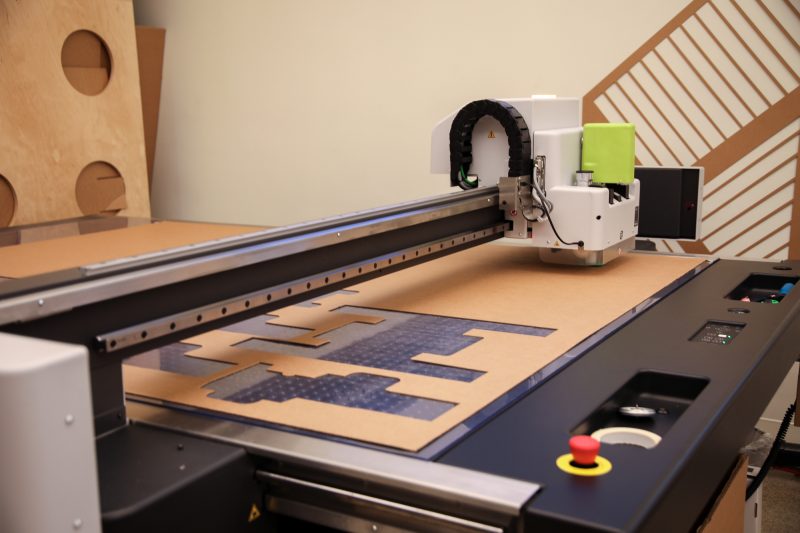
Most recently, the team had to come up with new packaging for the Glow. But with its in-house machine, that was not a problem.
